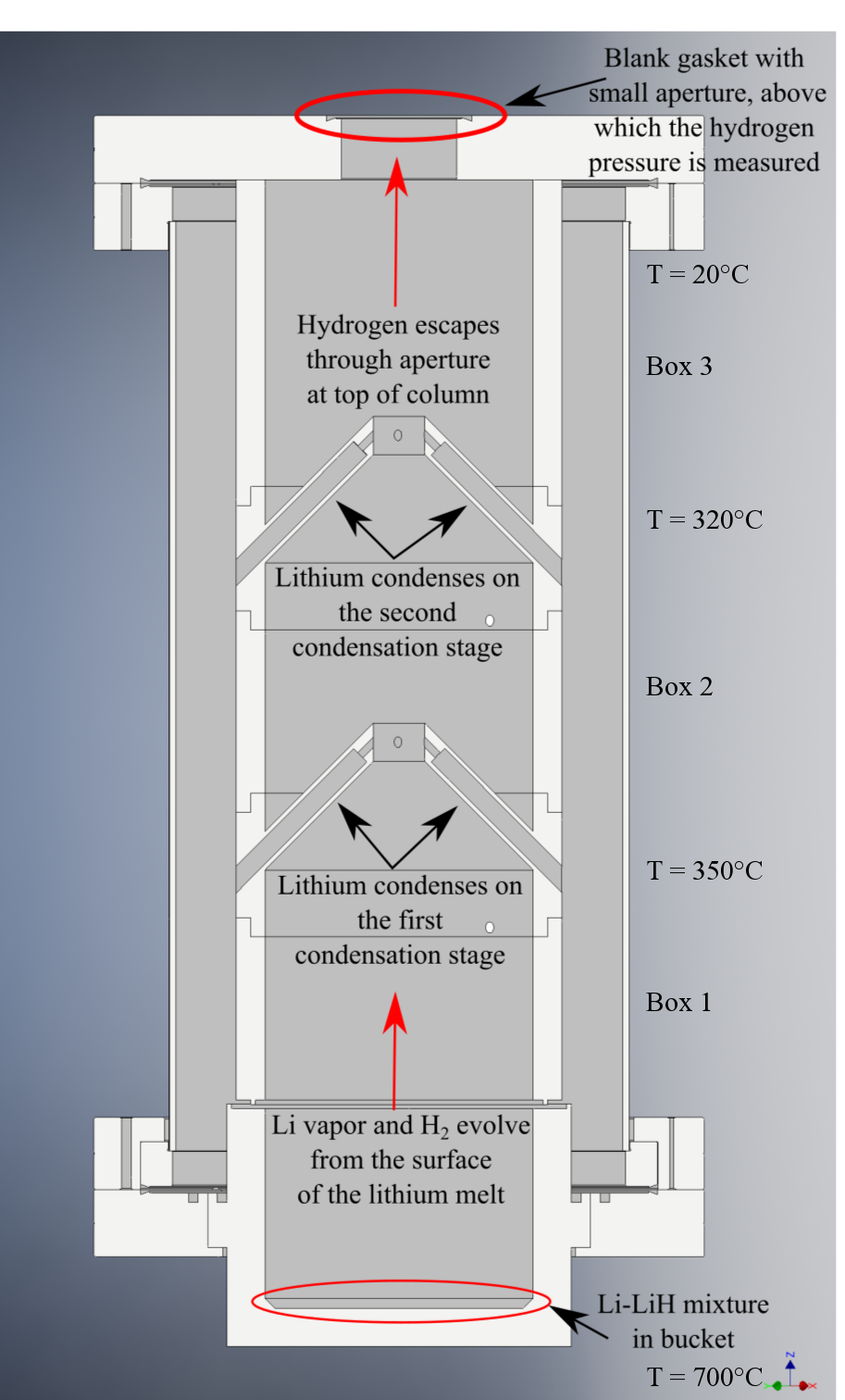Hydrogen Desorption Experiment (HYDE)
March 2, 2022
Use of lithium as a plasma-facing component in fusion reactors has been shown to increase plasma performance. This is in part due to lithium’s ability to create a low-recycling regime inside the device. These low-recycling regimes are characterized by an absorbing wall that does not allow cold particles to escape back into the hot plasma. Lithium is able to getter any of the fusion fuel or impurity species that make it to the wall. However, the absorption of fusion fuel, specifically tritium poses some concerns for the long-term use of lithium in fusion devices.

At the Center for Plasma-Material Interactions, we are working to develop a variety of flowing lithium systems, along with hydrogen removal systems. The Hydrogen Desorption Experiment (HYDE) is working to develop a distillation column to use thermal desorption as a means to remove hydrogen species from the lithium bulk. This system has previously shown success at hydrogen removal in highly saturated lithium. Ongoing research is focusing on determining the efficiency of the device as a function of hydrogen saturation and developing specifications for its implementation into flowing system under reactor relevant conditions.